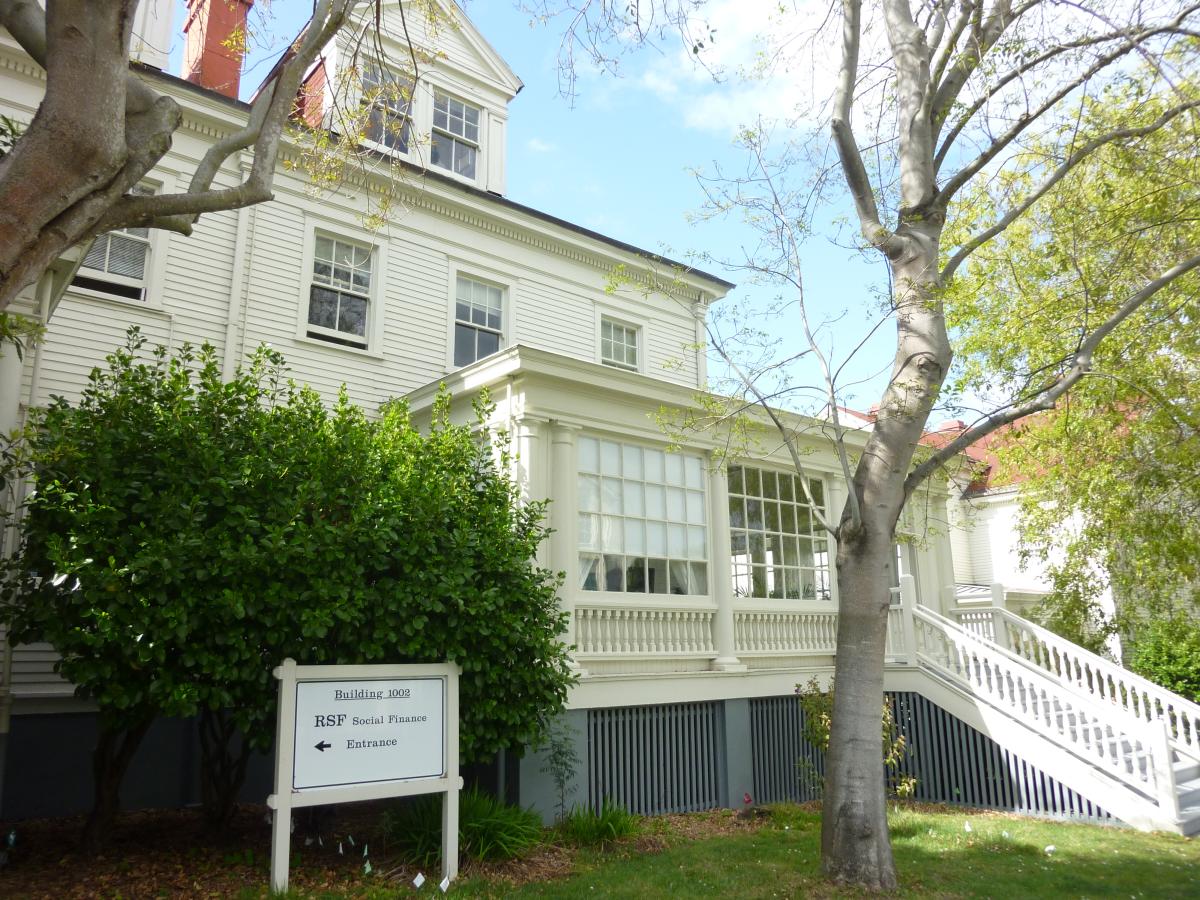A History of RSF Social Finance
As part of our 30th anniversary we have pulled together a timeline of RSF’s history to celebrate our growth.
Originally published in the Spring 2014 RSF Quarterly
1936 – The Rudolf Steiner Foundation is incorporated as a treasury for the Anthroposophical Society in America. The foundation remains small for nearly 50 years.
1983 – Siegfried Finser (a trustee of the Foundation) begins meeting with colleague, John Alexandra, to look for ways to work with money that are more consistent with the spiritual and social insights of Rudolf Steiner.
1984 – Mark Finser, Ann Stahl, and Philip Mees join S. Finser and Alexandra in the startup. Soon after, RSF receives a request for a loan from the Pine Hill Waldorf School in New Hampshire, which was destroyed by fire the previous year. When the request is made, the Foundation only has $6,000 cash in assets. The founding group reaches out to the community to fundraise, and the Rudolf Steiner Foundation makes its first loan commitment in the amount of $500,000.
RSF’s first offices are located in John Alexandra’s garage in Spring Valley, New York.
Total assets: $356,000
Loan Portfolio: $88,000
Investor Funds: $315,000
Client Accounts: 17
1985 – RSF begins making grants through its first Donor Advised Fund, made possible by the generosity of Mary T. Richards.
1989 – RSF reaches financial stability, operating income matches operating expenses for the first time.
Total assets: $5,067,000
Loan Portfolio: $2,893,000
Investor Funds: $3,563,000
Client Accounts: 264
1991 – Mark Finser is elected RSF’s first executive president and CEO.
1994 – RSF moves to it’s first entirely owned property in Harlemville, New York, with a small office still in Spring Valley.
Total assets: $9,022,000
Loan Portfolio: $4,458,000
Investor Funds: $5,060,000
Client Accounts: 445
1998 – RSF moves to the Presidio in San Francisco. This move is symbolic of a major change for the organization. At this point, RSF begins to expand its activities beyond anthroposophical initiatives and becomes more active in the world by standing for change in the way money and resources are viewed and utilized by humanity.
1999
Total assets: $30,608,000
Loan Portfolio: $14,253,000
Investor Funds: $12,568,000
Client Accounts: 535
2002 – RSF launches its first pilot for for-profit lending called the Fair Economy Fund. Early borrowers include Organic Bouquet and Bent Oak Farms.
2004
Total assets: $80,691,000
Loan Portfolio: $34,081,000
Investor Funds: $39,162,000
Client Accounts: 1010
2005 – RSF rebrands as RSF Social Finance to be clearer about its position and work in the world of finance. RSF adopts “inspired by the work of Rudolf Steiner” to keep the connection transparent.
RSF is among the first in the industry to launch mission-aligned Donor Advised Funds (DAF). With this new format, assets held in DAFs are invested for social and environmental benefit.
2007 – Don Shaffer joins as President & CEO; Mark Finser becomes Chairman of the Board. At that time, RSF’s assets have grown to $120,000,000.
2008 – The RSF Mezzanine Fund is launched. This is the first fund to provide mission-aligned financing (from accredited investors) for early-stage social enterprises.
2009 – RSF breaks from LIBOR as a benchmark for setting interest rates, and launches RSF Prime, a community-based model for determining interest rates. The first Quarterly Pricing Meeting – a community discussion to recommend rates – is held in September at RSF’s offices.
Total assets: $123,005,000
Loan Portfolio: $69,149,000
Investor Funds: $64,785,000
Client Accounts: 1228
2010 – In response to the indirect, opaque, impersonal and volatile nature of the stock market, RSF divests from all public equities and redirects capital to investments more closely aligned with its values.
The RSF Program Related Investing Fund (PRI) is launched. This fund serves the increasing number of private foundations interested in using program related investment to support charitable projects. The Fund focuses on the Food & Agriculture sector.
2011 – The first RSF Shared Gifting meeting is held. Shared Gifting is a new model of grantmaking that gives grantees the power to decide how a pool of funds is allocated among participants. This model encourages collaboration instead of competition and is based on RSF’s Mid-States Shared Gifting Group.
In partnership with Leslie Christian of Portfolio 21 Investments, RSF publishes “A New Foundation for Portfolio Management” a white paper that challenges the traditional notions of portfolio theory and investment management. It is grounded in the understanding that economic growth cannot be infinite on a planet with finite natural resources.
2014 (Q1 2014 estimates)
Total assets: $162,998,000
Loan Portfolio: $74,769,000
Investor Funds: $99,704,000
Client Accounts: 1836


